The history of Luxor shows us that the city had a deeply religious nature as it was known to be Thebes which means the city of Hundred Doors and the city of Amun as it was the worship center for the Theban triad. The importance of the city grew at the beginning of the 11th dynasty during the early middle kingdom leading to the new kingdom where the city became the capital and a universal hub for all the political, religious, and military aspects in Ancient Egypt. Thebes played also a major role in expelling the invading forces of the Hyksos from Upper Egypt.
From the 18th to the 20th Dynasty, many kings and Queens established many temples to honor the gods king Amenhotep III constructed the temple of the deity Amon, his consort the goddess Mut, and their son Khonsu the moon god A.K.A Luxor temple in the late 18th dynasty, soon the power of Amon grow stronger as he was merged with the sun God Ra to Form Amun-RA who was worshipped in his temple in the Karnak Temples Complex. King Akhenaton (1353-1336 BC) tried to enforce Monotheism as the way of the land when he moved the capital to the city of Amarna and forced Atonism (the worship of the only god Aton) on the nation but he failed to do so after a period of civil war and unrest.
During the new kingdom, a new set of constructions took place as many kings and Queens like Ramses II (1279-1213 BC) and Hatshepsut (1507- 1458 BC) desired to immortalize their legacy plus it became a custom for any king or queen during the new kingdom to be buried in the valley of the kings as it holds 63 royal tombs such as the tomb of Ramses the Great, Tutankhamen, Thutmose III, Nefertari and many more. Luxor is quite famous for the glorious temple of Hatshepsut which reflects the true artistic design and classical architecture of that era. One of the last characters to add something new to the city was Alexander the Great as a granite shrine of him was added to the Luxor temple.
The ancient Egyptian nature of Luxor hasn’t changed or decreased even when the Greek, Roman, Coptic, and Islamic Eras came to Luxor and many churches and mosques were built near or even on some of the temples, Luxor remained a window to the Ancient Egyptian History. The city of Luxor with all its monuments was designated as a UNESCO World Heritage Site in 1979 and it keeps surprising us with discoveries every single day.
Luxor Attractions
What makes Luxor truly unique is the number of one-of-a-kind archaeological attractions located all over the city which made Luxor earn the title of being the largest open-air museum in the world. Following are the best places to visit in Luxor that one should not miss out on while vacationing in Egypt:
Temple of Karnak

Of Luxor's many monuments, the Temple Complex of Karnak has to be its most astonishing and beautiful feat. It is the second-largest temple complex in the world and the second-most visited site in Egypt. In addition to its religious significance, it also served as a treasury, administrative center, and palace for the New Kingdom pharaohs. The great Karnak Temple is also characterized by the enchanting sound and light shows that take place every evening, which is a great way to discover the temple.
Luxor Temple
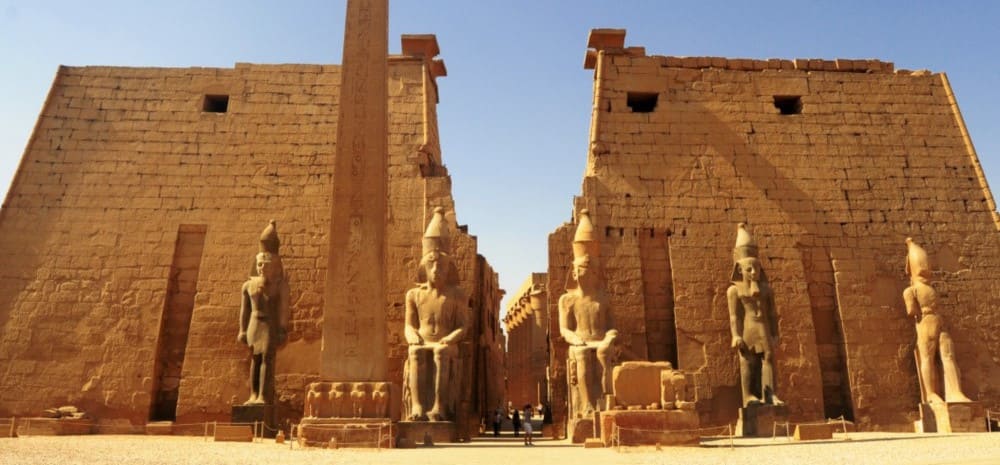
Luxor temple is the largest and most significant religious center in ancient Egypt. It was built during the Egyptian New Kingdom during the reign of King Amenhotep III. Different than other temples in Luxor, the Luxor temple was not built in adoration to a god or a god figure of the kings and pharaohs; instead, the Luxor Temple was built in dedication to the rejuvenation of kingship. It is placed firmly on the tourist trail in Egypt, attracting many thousands of visitors each year. It also might be the greatest testament to why Luxor has earned its nickname, “The World’s Largest Outdoor Museum”.
Temple of Deir al-Bahri (Queen Hatshepsut's Temple)
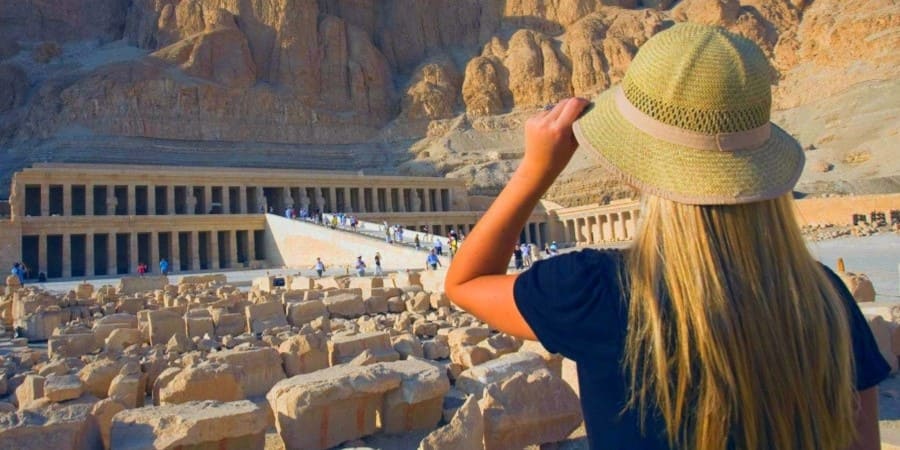
The temple of Deir al-Bahari, popularly known as the Queen Hatshepsut’s Temple is magnificently located at the foot of the sheer cliffs fringing the desert hills. It dates back to the Egyptian Eighteenth Dynasty about 3500 years ago in Deir el-Bahari on the West Bank of the Nile. It was built by Queen Hatshepsut, the only female pharaoh in the history of Ancient Egypt. While visiting Egypt, you have to visit the unforgettable Hatshepsut Temple to see one of the greatest wonders of ancient Egypt.
Valley of the Kings
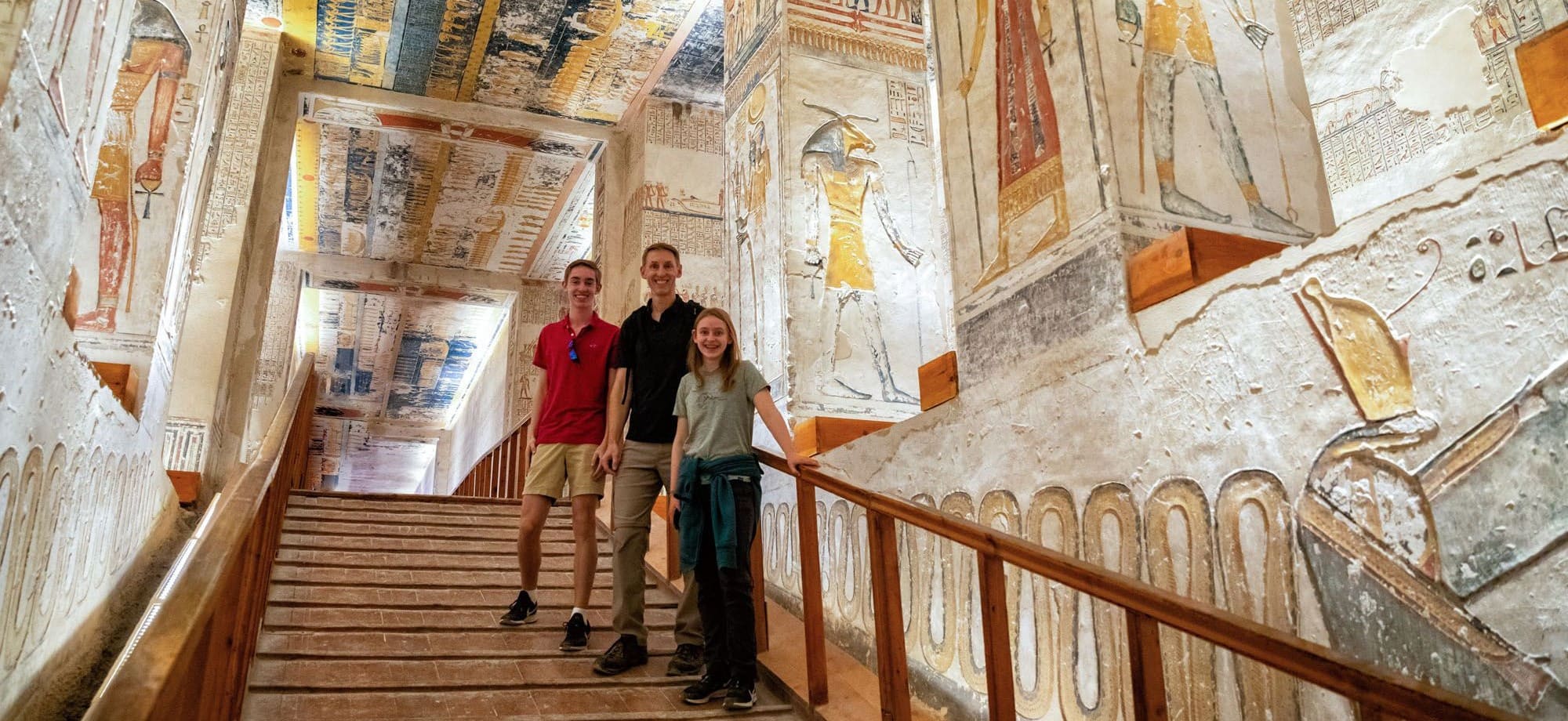
The popular Valley of the Kings was the final resting place for the kings of the 18th, 19th, and 20th dynasties. It is the most famous site for its unique collections of tombs and breathtaking ancient ruins, located on the west bank of the Nile River near Luxor. Within the valley are 63 tombs, which are a roll-call of famous names of Egyptian history, including the famous boy king Tutankhamun.
Valley of the Queens
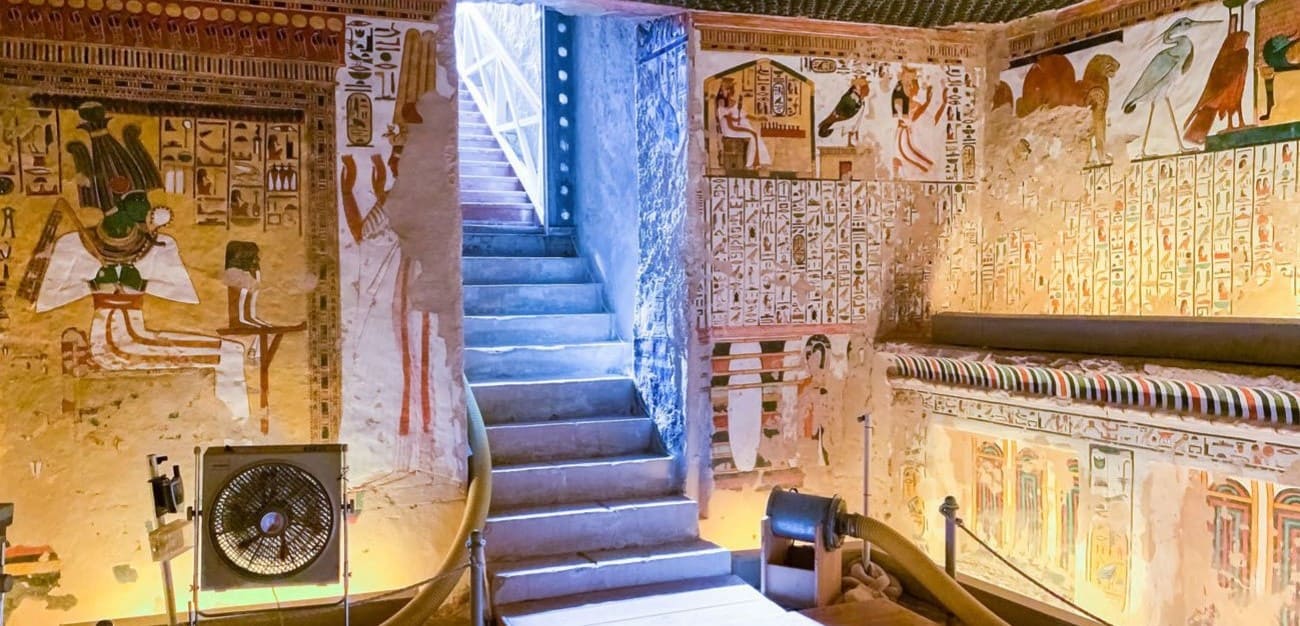
Hidden in a Y-shaped ravine on the West Bank of the Nile near the Valley of the Kings, the Valley of the Queens is the final resting place of some of the most beautiful and powerful Queens, princesses, nobles, and other members of the royal family. It contains over 75 tombs from the 18th to the 20th dynasty. These Tombs were not as extravagant or as large as the Kings' tombs but the beauty of the decoration remained the same. The most famous tomb at the site is that of Queen Nefertari, which is only occasionally open to visitors.
Colossi of Memnon
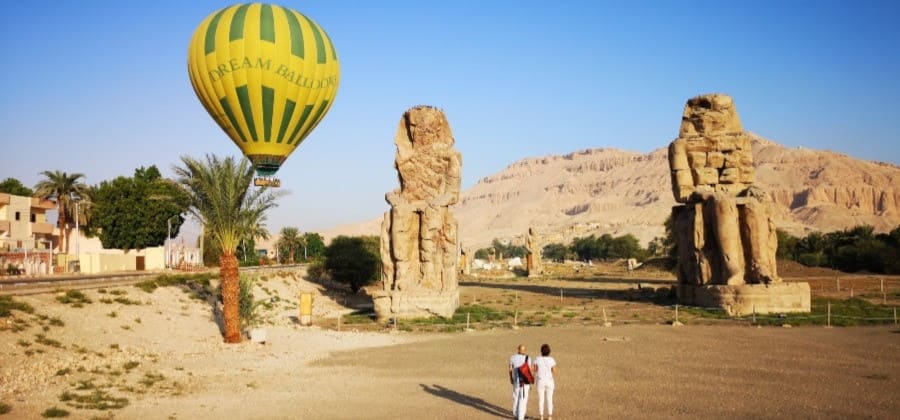
The Colossi of Memnon are two massive 18-meter-high stone statues. They are the first monuments most travelers see on the West Bank. They represent Amenophis III seated on a cube-shaped throne, and once stood guard at the entrance to the king's temple. They are famously named by the name of Colossi of Memnon due to a phenomenon produced by one of the statues after an earthquake. Even after the temple was destroyed by a severe earthquake, the Colossi of Memnon remained standing strongly for thousands of years.
Medinet Habu
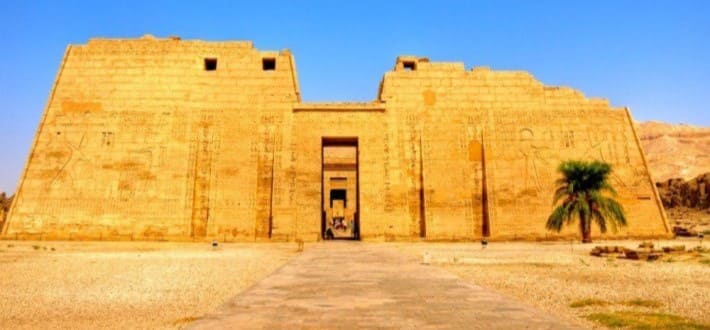
While it is not among the well-traveled sites on the West Bank, Medinat Habu is considered by many visitors to be among the most impressive sights they see in Luxor. The main temple area was built exactly on the model of the Ramesseum and, like the Ramesseum, was dedicated to Amun. The reliefs here are some of the best you'll see on the West Bank. Visitors come here mainly for the outstanding wall reliefs, and enormous depictions of pharaohs, gods, and battles. There are also highly impressive hieroglyphs on both walls and columns.
Tombs of the Nobles
If you haven't had your fill of tombs in the Valley of the Kings then make a beeline for the Tombs of the Nobles, which may be less famous, but include much better-preserved examples of tomb paintings. The Valley of the Nobles is a Hundreds of rock-cut tombs of nobles in ancient Egypt, discovered along the west bank of the Nile in the city of Luxor. It is the final resting place for many governors, officials, administrators, generals, and others from the new kingdom.
Ramesseum
.jpg)
The Ramesseum Temple is one of the great funerary temples that were built for the dead in ancient Egypt. It was built by King Ramses II and dedicated to the god Amun. The temple lies on the edge of the cultivated land; some one-and-a-half kilometers south of Deir el-Bahri on the West Bank. Unlike the well-preserved structures that Ramses II built at Karnak and Abu Simbel, this mortuary temple, dating to 1258 BC, still has more than enough to interest the visitor.
Deir el-Medina
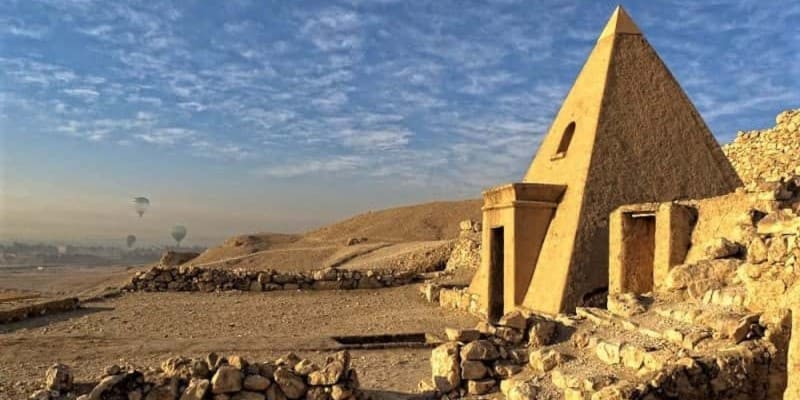
Deir el-Medina, on Luxor's West Bank, is home to a small temple, the remnants of a workers' village, and the tombs of the workers themselves. It's well worth a visit for the wall paintings adorning the tombs, which differ in style from those that decorate the pharaoh tombs and are a vibrant depiction of daily Egyptian life. All of this makes Deir el-Medina a pleasant change after countless monuments glorifying the pharaohs and their morbid fixation on the afterlife.
Luxor Museum
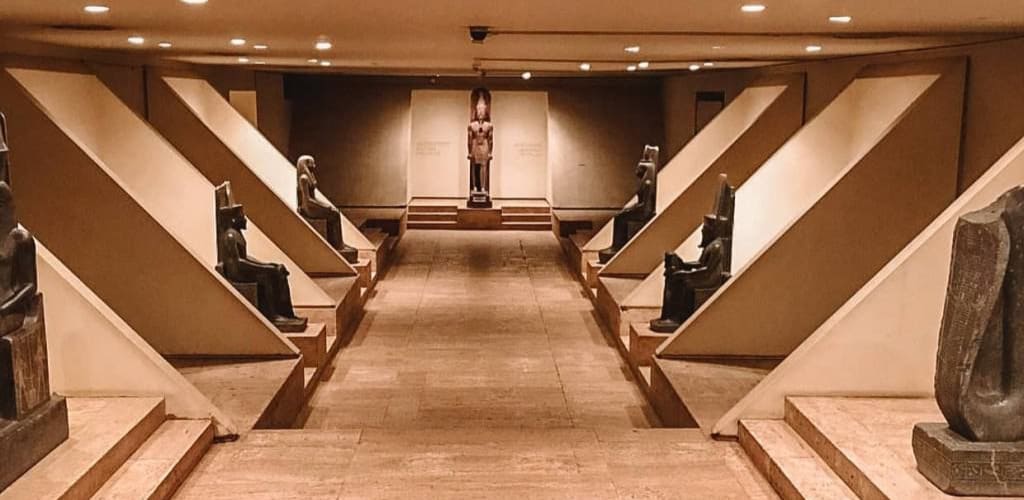
Luxor Museum is believed to be one of the best museums in Egypt that holds a beautifully exhibited collection from the local area, which tells the story of ancient Thebes, from the Old Kingdom right up to the Islamic Period. It is located on the East Bank of the Nile River in Luxor; exactly between Karnak Temple in the North and Luxor Temple in the South. It was opened in 1975 and it contains artifacts that were found in the Luxor area.
Mummification Museum
Located in Luxor, to the north of Luxor Temple and overlooking the River Nile, the Mummification Museum is a small yet interesting museum dedicated to explaining the ancient art of mummification. It was opened in 1997 AD. The area of the museum is about 2000 square meters, including several sections, which are the exhibition hall, the cafeteria, the lecture hall, and the video room. It can easily be explored and appreciated in less than an hour.